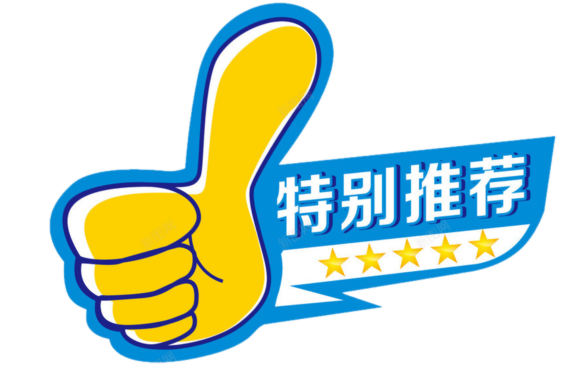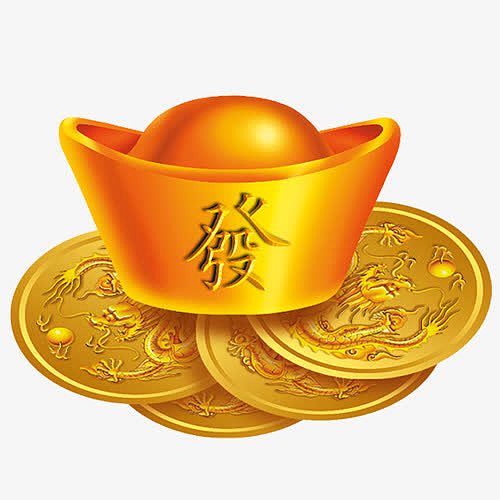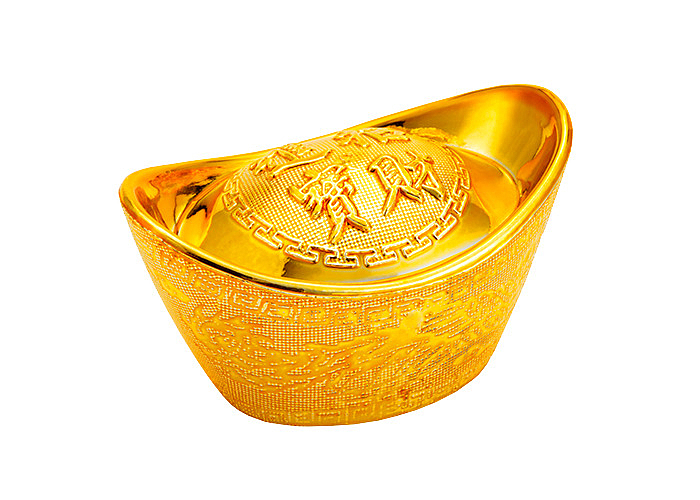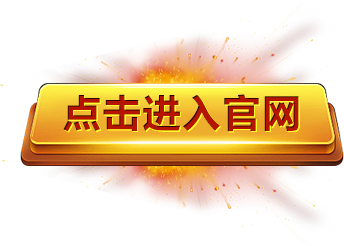提示:单击上面的江苏衰老行业协会,一键即可
概括:
促进中药卫生保健服务是协调促进健康中国战略和积极应对人口衰老的国家战略的重要体现。目前,江苏对传统中药保健,传统中药的深刻基础以及基本上是中药卫生服务系统的需求很高。社区护理,医疗和护理整合,旅行和老年护理以及具有中药特征的医疗和护理联盟等服务模型正在探索和实践中。 。但是,江苏传统中药卫生和老年护理服务也存在不完美的政策和法规,零散的治理机制,服务能力疲软,工业发展疲软以及服务才能的严重短缺。建议建立和改善传统的中医健康和老年护理服务系统,并建立一个完整的生活周期传统中医健康和老年护理服务系统,提高传统中医健康和老年护理服务的水平,促进综合发展中医健康和老年护理产业的建立,并培养了健康和衰老的才华的基础。
关键词:中医;健康衰老;传统中药健康衰老
作者个人资料
Yu Xiaoyongta谈论了Nanjing传统大学中医学大学,老年护理服务与管理学院的老年护理服务与管理学院。
传统的中药保健服务是使用传统中药的概念,方法和技术的使用,为老年人提供持续的身体和心理护理,预防疾病,改善身体健康,诊断和治疗疾病以及促进健康中医健康管理服务和医疗服务。中医对整体的重要性,强调个性化,强调“预防疾病”,易于使用,并且易于掌握社会工作者,护理工作者,志愿者和老年人的实践。它可以成为人们改善健康并预防疾病的重要方法。开发传统的中药卫生保健服务是优化老年健康和老年护理服务供应的重要措施,也是协调促进健康中国战略并积极对国家人口衰老战略做出反应的重要方法。
一
有关中医医疗保健的相关政策和法规
我国目前的有关中医健康和老年护理的政策和法规是由“传统医学法”作为核心形成的,策略促进了传统中医的继承,创新和发展以及积极回应的策略对于人口衰老,包括有关中药的健康和老年护理的特殊政策和法规,以及与传统中医政策和老年护理的法规有关的健康,健康的老年护理涉及中医政策和法规等
1。传统医学医疗保健的特殊政策和法规
目前,关于中药传统医疗保健的特殊政策和法规并不多。 2015年,国家卫生和计划生育委员会,民事事务部和其他九个部门发出了“指导有关促进医疗,卫生与老年护理服务组合的意见”。尽管没有直接提及“中药和老年人护理”一词,但它已经意识到中医是预防性保健和老年人保健的独特优势医疗保健需求。随着“关于促进中医学中健康和老年护理服务发展的实施意见”,以及“关于深入促进综合医学和护理发展的几种观点”,该国明确对中药的健康和老年护理服务进一步丰富了其服务内容和范围。 2022年,国家中医和国家卫生委员会政府发布了“增强老年中医学卫生服务的实施计划”,在机构的建设,服务能力,服务内容,人才培训和人才培训和传统中药卫生保健科学研究。特定的工作措施和要求。有关详细信息,请参见表1。
此外,除了鼓励全面的医院,传统的中医医院,基层健康和医疗机构以及其他组织参加中医药健康和老年护理服务外,“支持社会力量提供中国医学医疗和健康的意见服务”并“促进了中国医学卫生服务与互联网文件的整合,例如指导意见以及有关加强中国医学卫生服务的科学和技术创新的指导意见,也表明国家支持社会力量组织资源,以帮助传统中药保健的创新发展,从而逐渐形成多种多样的传统中药保健模式。
2。有关中药的政策和法规,涉及健康的老年护理
国务院,国家卫生委员会和其他部门发布的中药政策涉及与健康的老年护理有关的内容,这些内容可用作中国医学卫生老年护理的特殊政策和法规的补充。如表2所示,传统的中医政策为中国医学保健服务的内容,服务能力,人才培训和标准制定了新的计划。
3。关于中医传统医疗保健的政策和法规
在健康的老年护理政策中,传统中药更专注于预防疾病和健康保存。根据老年人的健康特征以及老年人对卫生服务的要求,从整个生命周期的角度来看,这一部分的政策强调了中医特征的建立。老年人的全面,连续的健康和健康服务系统,将健康教育,预防性保健,医学诊断和治疗,康复护理,长期护理和姑息治疗整合在一起。同时,老年人的健康管理,预防干预,医疗保健,旅行和老年护理已深入融合,为传统中药的独特优势提供了充分的发挥,并促进了向老年人提供广泛的中药资源的广泛服务。有关详细信息,请参见表3。

二
江苏的基本条件和练习探索中医药的健康老年护理
1。基本条件
(1)中医的医疗保健需求
1999年,我的国家正式进入了一个衰老的社会,1986年,江苏成为该国最早进入衰老的省份之一。截至2023年底,江苏的年龄在60岁及以上的人中有204.29万人,其中年龄在26.02%的老年人口中,近30万人年龄在80岁及以上。其中,60岁或以上老年人的慢性疾病患病率为77.4%,80岁及以上老年人的慢性疾病患病率为85.3%。受深度衰老和其他因素的影响,江苏的城市和农村居民的疾病范围已变成慢性和老年疾病。 “蓝本衰老文明2023年”表明,江苏的受调查的老年人中有42.1%使用传统的中药进行门诊或住院治疗,其中饮食疗法和健康保存,预防慢性疾病预防和治疗以及健康维护以及健康维护是最紧迫的老年人的传统中药服务需求。 [1]
[1]老化文明的智囊团。蓝书,老化文明2023 [M]。南京:江苏人民出版社,2024:119。
(2)中医的基本基础
江苏在历史上培养了许多著名的医生,学校和学术繁荣。当地的中药学院学院,例如Wumen Medical School,Menghe医学院,Longsha医学院是中医的重要出生地之一。江苏是该国最早开设和建立中药医院的中药医院。它是学校的一个省份,是中医部的第一批成员,第一批中国医学教科书和第一批中国医学教师;有6个国家医学硕士是传统中药领域最高的学术荣誉和水平,在北京和上海排名第三(仅次于北京和上海),它拥有1位传统中医行业的院士,7位著名的传统传统行业该国中医从业者和8个Qihuang学者。中药大师甘旺(Gan Zuwang)健康保存的8个单词秘诀:“儿童的心脏,蚂蚁食物,乌龟欲望,猴子运动”,以及中医保存16个字的方法,大师朱·利安根(Zhu Liangchun):“土地”生活,乐观的心情,适度的运动,合理的饮食“等等”等已成为人们照顾健康的重要生活方式之一。
(3)中医卫生服务系统
作为该国唯一在中国医学服务模型中创新的试点省,江苏创建了许多全国性传统中医中心(辅导),全国传统中药区域医疗中心,国家传统中医的流行病预防和控制基础,,基础,以及国家中药诊断和治疗中心,并建立了5个省,城市,县和村庄,并建立了5个省,城市,县和村庄的5级服务系统,100%的省和市政传统中药医院已经达到三年级的水平,100%的县级传统中药医院达到了二年级的水平,100%的基层医疗机构已经建立了全面的中药服务领域。此外,有77个大规模的中药制造商,形成了20种大型中药品种,年销售额超过1亿元,约占该省制药业的6.8%,占全国传统中医的5%产值。
2。创新实践
目前,江苏通过新的建筑,额外的建筑与合作探索并实践了中药的传统医疗保健模式。 “新建筑”是为了重建老年护理机构提供中医与医疗保健相关的服务。加法包括两种情况:“救援并增加医疗服务”或“医疗服务”和“医疗服务”;也就是说,在老年护理机构中增加了中医老年医学部门,或在中医医疗机构中增加了老年护理部门。合作主要涉及老年护理机构与中医医疗机构之间的合作,并为转诊建立了“绿色渠道”;或老年护理机构和基层社区医疗机构之间的合作,共同为家庭社区中的老年人提供中医保健服务。
(1)社区护理模型
将传统的中医保健服务与主要医疗服务相结合。以社区街道和主要医疗机构为平台,以改善中国医学卫生服务在基层社区服务中的嵌入和可及性是江苏各个地区通常采用的主要模型之一。传统中药服务的主体可以是主要医疗和卫生机构的医务人员,街道管辖范围内的中医医院的医生,主要医疗机构的医生以及来自医疗联盟中传统中医医院的医生管辖权。通过定期咨询,家庭医生合同服务,社区免费诊所,健康教育,知识竞赛和其他方法,将街道或社区作为主要的工作支持平台,中医和健康的概念已纳入社区的实际生活中居民,从而改变他们的健康行为和生活习惯,并有效地干预和治疗中医服务。例如,南东市有9个传统的中药诊所,建造了第一批“江苏基层医疗和卫生机构五级中药诊所”。所有博物馆患有5种以上有利的中药疾病,一个超过300平方米的区域。依靠著名的中医医生去基层和中医服务。该项目包括在家庭医生合同内容和其他方法中。开放健康项目具有独特的中药特征,例如子午健康,按摩,刮擦,兆头按摩,罐头疗法,莫西匹配等,并使用中医药技术来调节次卫生状态以实现五个内部的平衡人体的器官。
(2)医疗和护理整合模型
将传统的中药保健服务与老年护理机构相结合。为了将传统中药资源与老年护理服务有机地整合在一起,为关注健康保存和增强基础的传统中药的优势充分发挥作用,并轻轻改善老年人的身体健康。作为Qinhuai的Nanjing医疗和护理综合老年护理服务改革的第一个试点区,Nanjing建立了第一个中国传统医学医学和护理综合养老院。该机构为老年人提供了传统的中药体格检查,为老年人建立了独特的医疗档案,例如身体宪法,脉搏,脾脏和胃,以便医生和护理人员可以理解和掌握老年人的身体状况,然后进行调节症状。中医物理治疗师经常为老年人提供针灸,莫西布斯,外科医学应用,脚浸泡等。老年人居住在房间和公共活动室中,相应的药粉是根据每个老年人的特定条件配置的为了改善老年人的免疫力,帮助睡眠,预防疾病等。在日常护理(例如食物,衣物,住房和运输)方面的护理服务。例如,通过Tai Chi,Wuqin Opera,Baduan Jin等。它可以放松子午线,激活子午线,增强身体,并由传统的中医从业者准备好的药物来增强脾脏和Qi,以滋养气和血液,并使用针灸,按摩,盆栽,熏蒸和其他丰富的中药技术。帮助老年人缓解慢性疾病的疼痛。
(3)旅行与生活和老年护理模型
将传统的中药保健服务与老年护理产业相结合。江苏省积极促进中医和卫生行业的扩展到老年护理行业的所有领域,对周围相关行业的辐射,并大力培养和发展传统的中医文化健康旅游业。例如,泰州市是该省传统中药的唯一县级国家综合改革试点区。通过促进机构和机制创新,该市积极探索了一种新的“医学,医学,营养,食品和旅游业”综合发展的模型,并通过促进机构和机制创新来确定6种传统的中药,并积极探索了一种“医学,医学,营养,食品和旅游业”综合发展的新模型,并确定了6种传统的中药。健康旅游示范基地,进行大规模的活动,例如“健康旅游季”。例如,位于江苏省Mooshan风景区的Kangyuan Health Valley是最早的全国性中国医学保健旅游示范基地之一,中医流行文化经验中心,卫生保健中心,医疗食品中心,多样化的老年老年老年人护理公寓,老年医院,疗养院等等等,以便老年人可以享受旅行的乐趣,了解中医的传统健康知识并体验传统的中药老年护理服务。
(4)医疗和维护财团模型

将传统的中药保健服务与老年护理系统相结合。在探索和创新中国医学保健模式的方面,除了上述中医保健资源与老年护理服务的某些联系的上述组合外,某些地区还着重于开放双向道路和整合老年护理和医疗保健的资源,从而促进了老年护理服务的效率。推动。基于此,一些地区在中医领域进行了许多尝试,以连接老年护理服务系统和医疗服务系统。在某些地区,可以看到对传统中药医疗综合模型的初步探索,并实现了相对显着的初始政策结果。例如,Wuxi City积极探索和促进结合医疗和护理,整合老年护理和医疗资源的模型,并创建Wuxi的首个“医疗联盟”服务模型,以满足老年人的老年护理和医疗康复的双重需求。目前,Wuxi经济和技术发展区拥有6个疗养院,Wuxi第二次中医医院组成了医疗和护理联盟。为城市中的社区家庭老年护理服务创建示范中心和开创性的模型,探索新的医疗保健和医疗保健社区融合模型。推广Wuxi市政和地区级传统中医医院,与许多老年护理机构和其管辖区的许多老年护理机构和老年护理服务中心签署医疗和护理联盟合作协议。在“ 2022年Wuxi Xinwu地区进入Wanjia项目的传统中医学的实施计划”中,指出,65岁以上的老年人中有70%享受中医健康管理服务并促进合适的中药技术。全面发挥传统中医在疾病康复中的核心作用,并促进中药技术和康复医学的整合。我们将广泛动员志愿者和其他社会力量,真正实现永不通过医疗和家庭服务离开家的目标。
三
江苏传统中药卫生保健服装面临的主要问题
1。政策和法规系统不完整
从当前与传统中医学健康和老年护理有关的国家政策文件来看,现有的大多数中国医学卫生和老年护理政策和法规都是政府和部门法规,立法层面不高,当局不强大。我国的“传统医学法”并未发布相关条款,以阐明与传统中药保健有关的内容。除了几种独立的特殊政策外,传统中药中医疗保健的大多数相关政策相对分散,并且仍处于相对分散的状态。它们仅以几个单词或一些章节的形式存在于其他工作政策的内容中,并且不能形成协同效应。政策的系统性仍然不完美,急需中药的新的有关医疗保健的新特殊政策。此外,在国家一级发布的当前政策文件尚未针对传统的中药保健行业发布相关标准。每个地区和企业自行制定相应的标准和管理规范,从而导致市场混乱和不规则竞争。例如,中药卫生保健人员的资格访问和服务质量评估缺乏相应的评估系统和标准。
此外,在我国现有的政策和法规中,没有对传统中药保健服务的官方定义,导致各种受试者与中医医疗机构,疗养院和中医医疗机构保持一致。对医学和健康的老年护理的内涵和扩展理解是不一致和不完美的。服务设计未能真正将中医概念纳入医疗保健领域。服务内容以正式的方式,服务项目是单一的,服务质量不均匀。医疗和护理的结合也与医疗保健一起提到。与医疗和护理的结合不同,医疗保健的内涵相对较丰富。健康与健康的结合不仅可以理解为在手段上的卫生服务和老年护理服务的组合,而且还可以理解为目的水平上的健康和老年护理的结合,即实现双重目标健康和老年护理。健康和健康的结合与健康的衰老密切相关。可以说,健康与健康的结合是实现健康衰老的客观要求和现实的途径。因此,为了适应提高健康意识并增加对老年健康服务的需求的要求,我们必须从政策层面响应中医学健康老年护理的特定含义和扩展,并在医疗保健和医疗保健之间做出更多区别理论和实践中的医疗保健。 。
2。治理机制的分裂
传统中药保健服务的管理权涉及诸如健康(包括中医),民事事务,医疗保险,市场监督和管理,人力资源和社会保障等部门。多管理行政体系导致了中国医学保健和老年护理的整合和协调发展的困难。以中药的传统医疗保健为例,目前的“国家经济行业分类”没有中医保健服务行业。实际上,注册通常仅通过明确的注册地址和标准化的注册名来完成。由于缺乏实质性监督,这种类型的机构客观地创造了一种社会状况,“人们没有采购,官员们不调查”社会。具体而言,卫生和卫生负责医疗机构的卫生保健服务,实施公共场所的健康许可和从业者的健康管理,并且对疗养院传统中医保健保健没有监管权;市场监督和管理部门负责社会保健机构的先决条件。很难判断传统中药保健服务的医学性质和保健性质;民事事务是负责疗养院服务的监督,缺乏中国医学服务标准和对疗养院的专业判断,人力资源和社会保障构成了从业者的实践。资格和日常监督机构无法确定[1]。
3。需要提高服务功能
江苏有66个二级和高于老年医院,而公共综合医院在第二层及以上的公共综合医院独立建立的老年医疗部门比例高达97%。但是,只有70%的二级和高于传统医学医院有老年医学,并且从业人员的比例相对较低,因此很难进行正常化的中医常见疾病和康复护理服务。 “江苏省基本老年护理服务指导目录清单(2022 Edition)”要求每年在管辖区中65岁及以上的老年人每年提供一次传统的中药健康管理服务,而每年一次中医干预的频率是不是四个医疗保健期的要求。合适的。此外,作为传统中药保健服务的主要机构,中医医院在其发展过程中偏离了“使用传统中医作为主要应用,并防止和治疗人民的疾病”的方向,并在那里是逐渐削弱中药的特征和优势的现象。这导致了传统中医医院更加西方的问题。与同一级别的综合医院相比,传统的中医医院在高级设备和有效的医疗服务速度方面处于不利地位。在这个复杂而多变的竞争环境中,传统的中医医院必须购买医疗设备,以增强西方医学的诊断能力,故意增加循证医学检查等,以增强竞争力并寻求发展。现在已经讨论了很多中药的标准化取向,符合现代监管措施,例如物理和化学实验,质量监测,审查和批准,但在某种程度上,它与综合征的差异和治疗有关中医,医学治疗的人,每个人的一份处方,个性化诊断和治疗的概念与不匹配。这可能会导致公众对传统中药的信任,认可和满意,中医缺乏文化信心,而且很难充分有效地发挥中国药服务的特征[2]。
4。工业发展相对较弱
中药传统的医疗保健产业连锁店很长,该行业范围很广,涵盖了第一,第二和第三行业,并且具有生态经济的特征。其中,中草药和中国专利医学公司“高原和峰值不足”。在2021年,江苏有41家中草药制造商,就数量而言,与Anhui和Guangdong省的差距很大。现代和聪明的人只生产了一些品种,即Kangyuan Pharmaceutical和杨氏河制药。其中,国家药物管理局对传统的中草药进行了多次常规随机检查,这表明大量传统的中国草药批次是无限制的,而无限制的项目涉及识别,检查,财产,内容,内容确定和浸出。检查,特性和内容测量不符合药物标准是未能随机检查中草药的主要原因,这反映了中草药在种植和加工中可能有不正确的来源和不规则的操作(例如在种植过程中滥用增长调节剂,增长期不足,收获季节不当,加工方法不当,浓缩的不规则准备等)体重增加和掺杂[3]。 In addition, although health and elderly care bases such as Dasi Traditional Chinese Medicine Health Town, Kangyuan Health Valley, Tangshan Hot Spring Health Town can provide traditional Chinese medicine health care experience, Chinese medicine planting ecological sightseeing and other traditional Chinese medicine health tourism projects and activities, the overall The industry is weak, and development is showing a trend of "small, scattered and weak".
5. Serious shortage of service talents
There are 8.9 practitioners in the five-level traditional Chinese medicine clinics in Jiangsu, with senior professional titles accounting for 29.3%, but the number of fifth-level traditional Chinese medicine clinics accounting for only 20%. The proportion of traditional Chinese medicine physicians in community health service centers and township health centers in the total number of doctors in similar institutions does not exceed 25%. The shortage of Chinese medicine talents at the grassroots level and weakening of services coexist, making it difficult to meet the traditional Chinese medicine health needs of elderly (semi-) disabled elderly people. In addition, talents with traditional Chinese medicine service skills in nursing homes are basically lacking, and those who choose to engage in nursing services do not have a high sense of professional achievement and industry belonging. The employees of nursing homes mainly include nursing caregivers, housekeeping waiters, health care teachers, etc., and problems such as difficulty in enrolling and high age and strong mobility of practitioners coexist. Among them, Nantong Health and Technical School has enrolled students for eight consecutive years, with only one year of enrollment, and more than half of the current students are transferred to majors.
[1] Ma Zhen, Yu Xiaoyong. Analysis of the regulations of social non-medical traditional Chinese medicine health care institutions [J]. Jiangsu Preventive Medicine, 2021, 32(06): 768-770.
[2] Yu Xiaoyong, Tian Kan, Jiang Feng, et al. Discussion on key issues and countermeasures for the reform and development of traditional Chinese medicine hospitals [J]. China Hospital, 2022, 26(5):2-5.
[3] Wu Yingxiong, Tian Kan, Yu Xiaoyong, et al. Dilemma and reform of social co-governance of Chinese herbal medicines in my country[J]. Chinese Herbal Medicine, 2019, 50(4):1028.
四个
Countermeasures and suggestions for promoting the construction of traditional Chinese medicine health care services in Jiangsu
1. Establish and improve the traditional Chinese medicine health care service system
First, actively respond to the needs of healthy aging, strengthen departmental coordination and linkage, increase support for the development of traditional Chinese medicine health care field and related industries, accelerate the establishment and improvement of the policy system and institutional framework related to traditional Chinese medicine health care, and continuously increase the health care field of traditional Chinese medicine health care. The special policies continuously enhance the professionalism and systematicity of policies and form effective connections between systems.
Second, actively respond to people's needs, further expand the scope and coverage of medical insurance, and include more traditional Chinese medicine health service projects suitable for the elderly in the scope of basic medical insurance payment; increase the improvement of traditional Chinese medicine characteristics such as acupuncture, massage, scraping, and cupping. Reimbursement ratios for diagnosis and treatment technology, traditional Chinese medicine physiotherapy instrument services, etc.; pilot implementation of the mutual recognition of traditional Chinese medicine health and elderly care service insurance, etc., to provide stable expectations for the development of traditional Chinese medicine health and elderly care services, and to ensure and promote the development of traditional Chinese medicine health and elderly care from the institutional level.
2. Build a whole life cycle traditional Chinese medicine health care service system
First, give full play to the coordination, coordination and urging responsibility of the department's work-related meeting system. Promote the comprehensive establishment of a joint meeting and a joint meeting system for the development of traditional Chinese medicine and a joint meeting of elderly care services in all districts and counties, study and formulate policies to promote healthy elderly care services in traditional Chinese medicine, and urge relevant departments of the people's government at the same level to perform their duties.
The second is to formulate and build traditional Chinese medicine health service policies across different life stages and different groups of people. The current disease-centered medical and nursing integration model focuses more on providing medical insurance services during the disease period, and it is easy to ignore disease prevention and health promotion. We should give full play to the important role of traditional Chinese medicine in treating premature diseases, treating diseases and rehabilitation, and achieve full-process traditional Chinese medicine health services and health guarantees from the fetus to the end of life.
The third is to build a diversified and multi-level traditional Chinese medicine health care service system. Support traditional Chinese medicine medical institutions to cooperate with civil affairs departments, build, trust and collaborate on non-profit medical and nursing institutions with traditional Chinese medicine characteristics, and provide integrated services such as prevention, treatment, health, and health care of traditional Chinese药品。
3. Improve the level of traditional Chinese medicine health care services
First, establish provincial-level traditional Chinese medicine health care centers, traditional Chinese medicine treatment centers, and research centers for the same origin of medicine and food, and formulate technical standards such as traditional Chinese medicine health care service standards, traditional Chinese medicine treatment standards, and medicine and food treatment standards, and promote the training and promotion. Scientific and operational traditional Chinese medicine health care technology methods.
Second, it is clear that the second-level or above traditional Chinese medicine hospitals organized by the government should build geriatric medicine, carry out traditional Chinese medicine health care services, talent training, and technology promotion capabilities to improve the supply capacity of traditional Chinese medicine for common and frequent diseases in the elderly.
Third, it is clear that family doctors should be equipped with at least one Chinese medicine personnel, and provide services such as TCM physical identification at least once a year, establish one Chinese medicine electronic health file for residents, provide one Chinese medicine health evaluation, and one Chinese medicine health guidance.
4. Promote the integrated development of traditional Chinese medicine health care industry
First, strengthen the regulation of traditional Chinese medicine health care institutions. Try to explore the provisions on the entry threshold for traditional Chinese medicine health care services and their practitioners in the "Jiangsu Provincial Traditional Chinese Medicine Regulations", and clarify the market access of market supervision departments and the technical normative collaborative review of traditional Chinese medicine competent部门。
The second is to promote the integrated development of traditional Chinese medicine with the Internet, tourism, sports, catering, hotel and other industries, and promote the integration of traditional Chinese medicine experiential services into the construction of theme projects such as health tourism, cultural elderly care, and smart elderly care.
Third, we will develop health testing, monitoring products and self-health care, functional rehabilitation and other equipment products that are easy to operate and suitable for the family, focusing on traditional Chinese medicine health care, diagnosis and treatment and rehabilitation, and the same origin of traditional Chinese medicine medicine medicine medicine medicine medicine medicine food, etc., and cultivate and strengthen the traditional Chinese medicine health care service industry.
5. Strengthen the foundation of healthy and aging talents
First, promote the training of general practitioners and assistant general practitioners in traditional Chinese medicine categories, and implement free training for rural orders. At the same time, strengthen the implementation of the regional registration system for physician practice locations and support traditional Chinese medicine doctors to practice in medical and nursing institutions.
The second is to strengthen the management of traditional Chinese medicine clinical, traditional Chinese medicine nursing, traditional Chinese medicine rehabilitation, elderly care services, etc., especially the cultivation of compound talents that integrates traditional Chinese medicine and healthy elderly care services.
The third is to gradually improve the normalized, standardized and standardized technical training system for traditional Chinese medicine, improve the traditional Chinese medicine health care service capabilities and levels of elderly care practitioners, so that more elderly care practitioners can master traditional Chinese medicine health care knowledge and technology. At the same time, we carry out training on traditional Chinese medicine knowledge and skills for grassroots on-the-job health technicians to cultivate backbone talents of traditional Chinese medicine at the grassroots level.
版权声明:本文内容由互联网用户自发贡献,该文观点仅代表作者本人。本站仅提供信息存储空间服务,不拥有所有权,不承担相关法律责任。如发现本站有涉嫌抄袭侵权/违法违规的内容, 请联系本站,一经查实,本站将立刻删除。如若转载,请注明出处:https://www.szchuangjihui.com/html/tiyuwenda/6200.html





